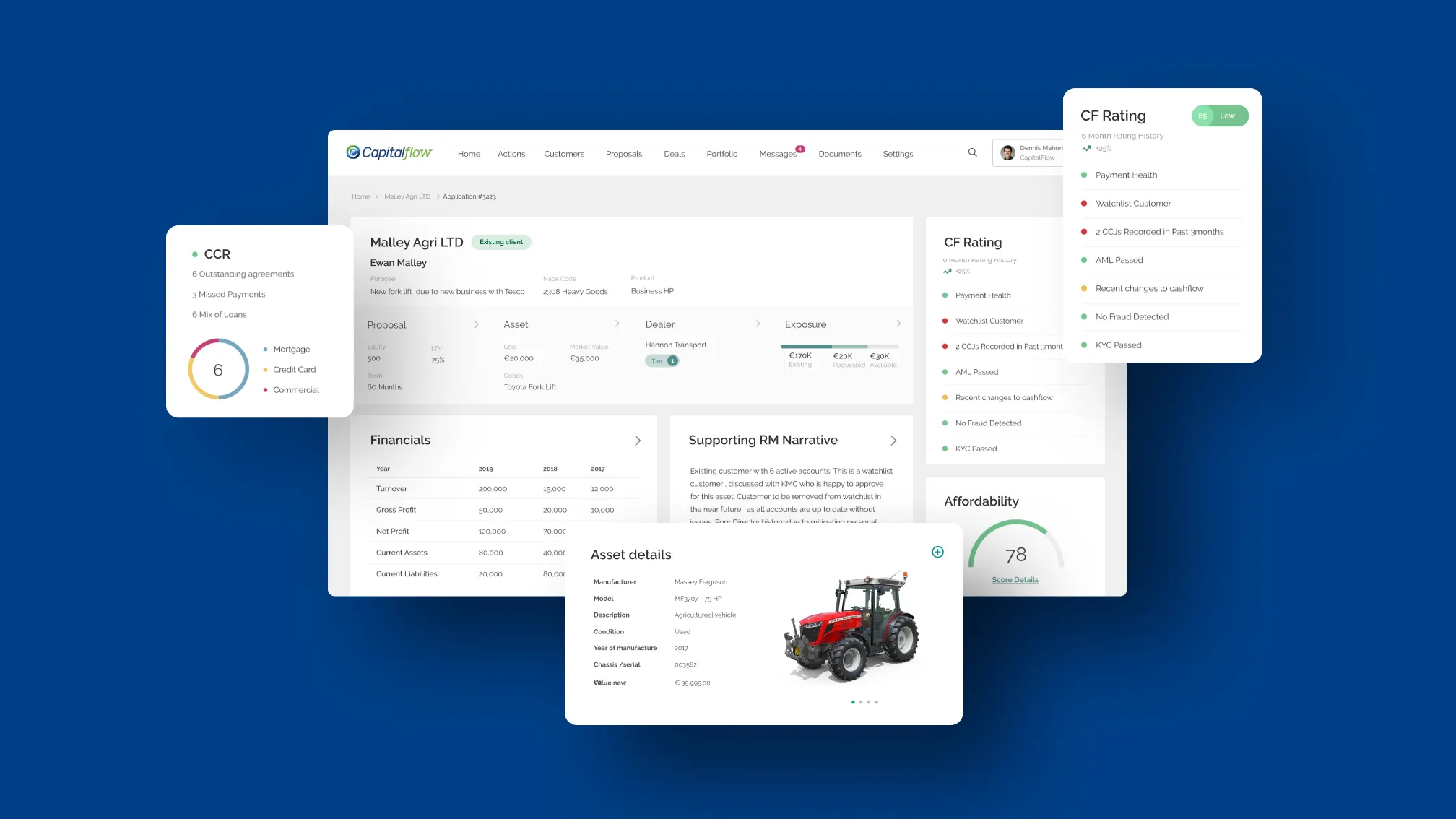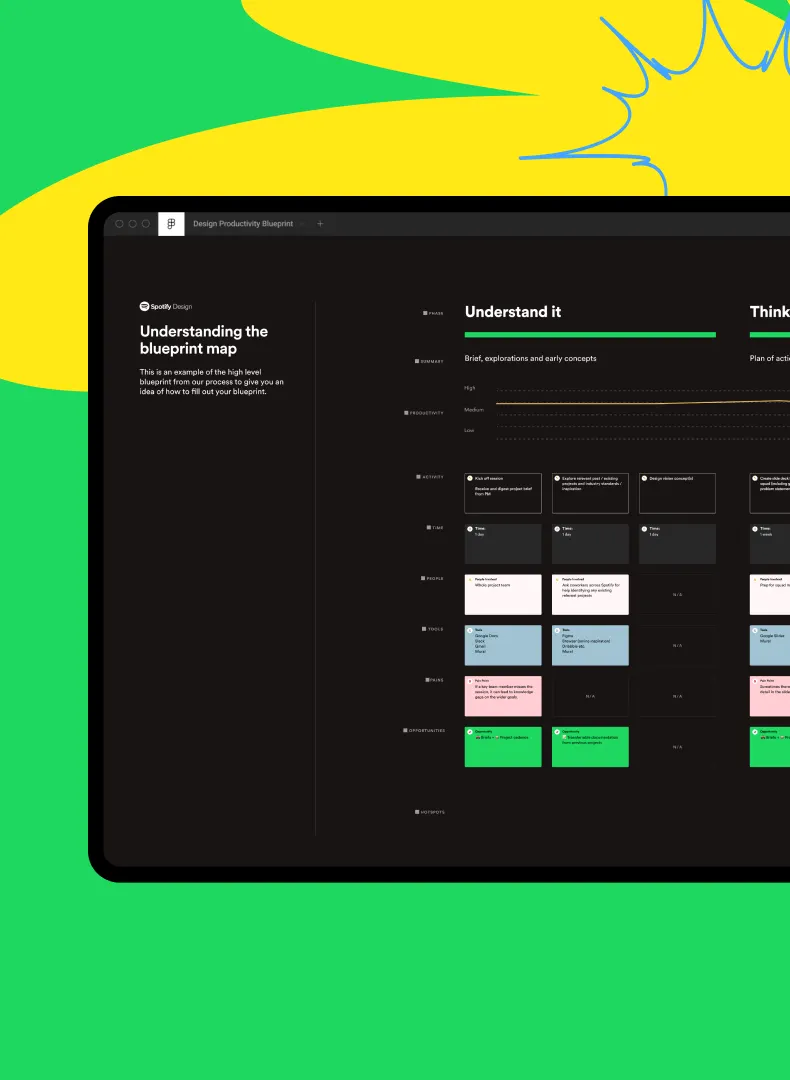Discover how a global media business overcame blockages to execution with expert research and enhanced digital work processes.
For your organisation’s people and processes to work effectively, you need to clearly map out your digital solution architecture, creating a strong strategic framework. Your solution architecture is a detailed description of your digital products or services, combining guidance from a range of business, information and technical viewpoints.
Improving your digital solution architecture
An expert digital product consultancy can help you construct a pragmatic and achievable implementation plan for your digital solutions. This outlines the steps your team will take to achieve your shared goals and objectives. It combines process and action, covering all aspects of the solution – from overall scope and estimated budgets, to the channels, assets, platforms and tools required.
By making a service blueprint of your digital offering, you can visualise the elements and process flow of a digital service in detail. Creating a service blueprint works in two ways. Firstly it gives you a clear picture of the way things are today, so you can identify issues to address. Secondly it enables you to evolve an improved service design, structure and workflow that your team can agree on – before you begin actual development.
Scaling your digital operating model
Your consultancy can also help you scale up operations beyond the limits of manual human resources. As digital change rolls out across your business, you move towards transforming all your organisation’s operations to digital processes.
Many organisations struggle with growing their digital initiatives beyond individual processes and pilot projects. To deliver the full potential benefits of digitisation, it needs to be scaled across your organisation.
A digital product consultancy helps your organisation successfully move to a transformed operating model, overcoming barriers to scaling that can hinder digital programmes. They help you see beyond technology aspects, to understand the wider issues of the organisation, such as supporting infrastructure, people, skills and communication.
For this level of scale-out, your organisation’s leaders must be fully on-board and believe in the benefits of digital. As these changes will affect the fundamental operation and culture of the business, they must be driven from the top of the organisation.
A consultancy can help you build vital consensus on your digital transformation initiatives among internal stakeholders across your organisation. This will include C-suite executives, departmental leaders, team managers, and the wider workforce. The consultancy will help you ensure that your stakeholders become enthusiastic enablers of your digital strategy, rather than impeding the scale-out.
Driving digital efficiency at scale will enable your organisation to quickly deliver significant business value:, bring agility and resilience to operations, and improve productivity for all your employees.

Saving time and solving problems for your users
With digital processes and automation, your people can get their tasks done more quickly and effectively. Time saved can be used to achieve more output and focus on higher-value activities.
With the help of a digital consultancy, you can give users and customers self-service digital tools to help them get straight to the information they need and resolve their problem – without wasting time on hold for a helpdesk or customer services agent. Users can gain new insights about how they use your services – or access smart actionable recommendations using AI to help them meet their needs in quicker and easier ways.
By saving users time, you improve customer experience (CX) and employee experience (EX) – and make your organisation more productive.
Providing real-time visibility of your business processes and teams
Once your processes are digitised, your consultancy can equip you with powerful business management tools that give you new visibility into the status and productivity of your operations.
They can help you bring more effective management to your organisation. Rather than using generic project tracking software, teams can manage their projects with tailored systems in real-time with more detailed status metrics and delivery estimates.

Real-world example – driving business-wide improvements to productivity
Consider this recent success story enabled by digital product consultancy Elsewhen. Our client, a leading global media platform, is focused on maintaining its speed of delivery and innovation. It has grown its R&D powerhouse to over 4,000 engineers. Our client identified that some of its teams were in a constant state of over-demand by other teams. This congestion of certain teams slows down the organisation, and hinders its ability to innovate and deliver at pace.
With the client planning to double engineering headcount over the next three years, Elsewhen led a research project to gain a deeper perspective on the root causes for congested teams. We proposed solutions and designed experiments to alleviate the pressure on those teams, by using a mix of technologies and ways of working.
Overcoming blockages that restrict team productivity
The rapidly scaling business wanted its teams to retain the agility and speed of a startup. It was evident that as the number of employees grew, the more coordination would be required, leading to further bottlenecks.
However, the company’s initial hypotheses and assumptions needed further analysis and validation before they could invest in solutions. They asked us to conduct research into their working practices and tech architecture – to better understand their barriers to execution.
Our research focused on their most congested teams, and those with the most technical dependencies. We interviewed these teams to understand why and where they encountered blockers when bringing new products and features to market.
Researching and analysing the pain points in workflow
To generate a comprehensive view of the problem, Elsewhen conducted interviews with both leadership and teams. We asked leaders about their ambitions and their overview of the implications of congestion. These views were crucial in framing the problem and getting maximum buy-in for the research.
We then conducted interviews with more than 50 key teams and a total of over 250 employees. We learned about their process, pain points and ambitions, with regards to the planning and execution of complex cross-organisational projects. Such projects require the collaboration of different teams, potentially from several different parts of the company.
Based on these interviews, we catalogued and categorised the pain points to identify recurring themes. We visualised these pain points by marking them on a service blueprint to unravel the end-to-end systemic issues affecting throughput.
This delivered an improved understanding for how bottlenecks impact teams and the overall organisation. Creating a live and shareable artefact provided a pivotal communication tool with stakeholders.
It helped create a shared understanding of where and when workflow congestion was happening – and the factors that led to this congestion.
Identifying and removing barriers to execution
Visualising our findings as a service blueprint helped shed light on several inherent blind spots. Firstly it created a shared understanding of the big picture. Secondly, it enabled teams to communicate using a common language. Lastly, it made it easier for users to identify cause and effect across the workflow.
We analysed these findings to identify root causes, systemic issues and potential opportunities for valuable process improvements, evaluating expected benefits. Based on the observations we made about people, processes and systems, we then provided hypotheses and recommendations. With clarity on how these components were worsening technical health and throughput, the company was empowered to apply tactics to address the root causes.

